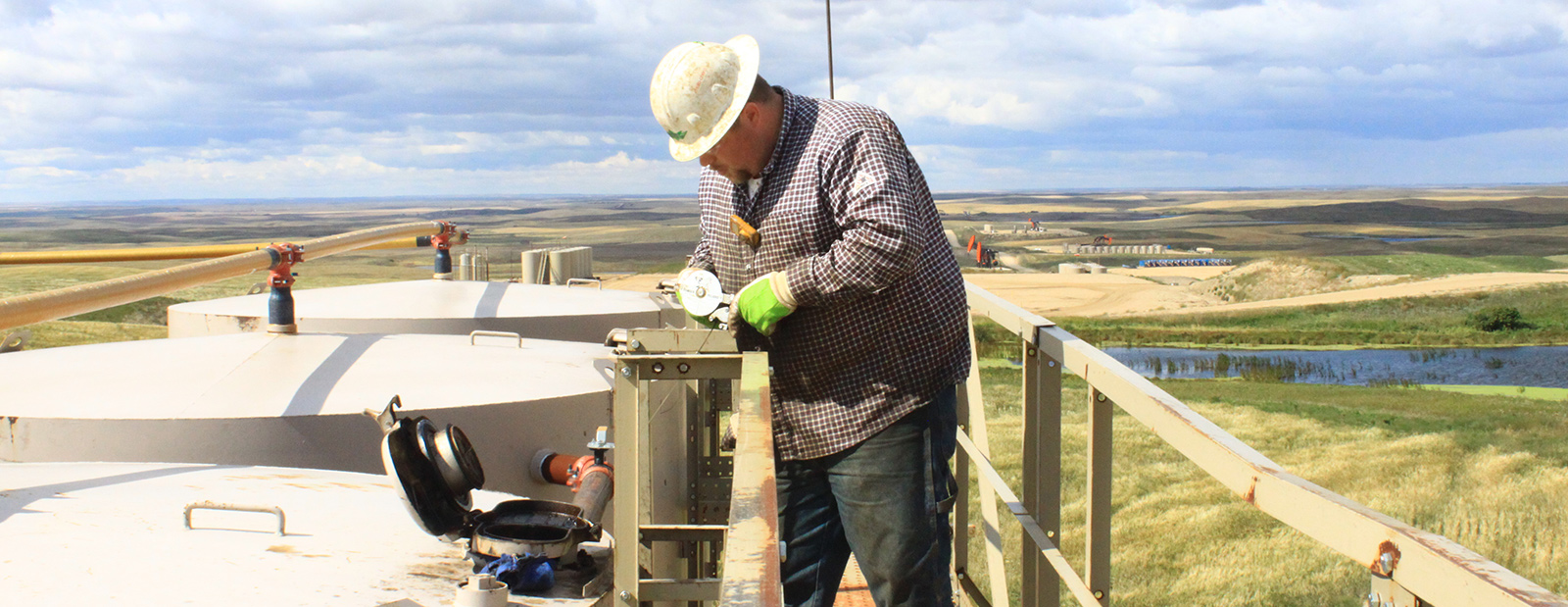Oil and Gas 101
The first step is exploration and discovery. Petroleum hydrocarbons (oil and natural gas) are the product of millions of years of plant decay which now inhibit porous rock formations. Throughout history, oil seeps (above surface) have been discovered around the country, including Montana’s very own Glacier National Park in the early 1900’s. While this provides a clear indication to explorers of proven reserves, most discoveries are not quite as simple as stumbling upon a bubbling pool of “Texas tea”.
Thousands of feet below the surface, shifting and movement of tectonic plates has created traps for these deposits. Salt domes, for example, are created in sedimentary rock by the upward force of a salt mass, creating a dome-like trap for oil and gas. Prior to the 1901 oil discovery in Beaumont, TX, using salt domes as an indication of potential oil was unheard of.
Today’s exploration geologists have advanced methods of helping to locate oil and gas, including typographical maps, aerial photography, sound waves, and 3D seismic projections to detect traps and potential deposits below ground. All of these resources accompany more than a century of oil and gas exploration and production history in the U.S.
Success rates in discovering petroleum have increased dramatically with improvements in technology, from less than 10% to more than 50% today. This means that fewer dry holes are drilled, which is good news for the environment. Better technology = less environmental impact and more productive wells.
In addition to new methods of discovery, modern drilling practices have led to exponential growth and production in the oil and gas industry, which in turn has helped to energize the U.S. economy. Most notably, new innovation in the ability to recover substantial amounts of oil and natural gas from shale has ended the conversation about peak oil.

The oil and gas industry is made up of a broad spectrum of explorers, producers, laborers, environmental consultants, geologists, and engineers, to name a few. After the exploration phase, it takes a number of steps and an enormous amount of labor, expertise, and investment to bring petroleum oil and gas from below ground, into our everyday lives. In order to make this possible, there are three sectors; upstream (exploration, drilling, production), midstream (pipelines), and downstream (refining).
After researching where potential reserves may be, the next step is for companies to secure lease rights from mineral owners, along with the necessary regulatory approvals, including an approved application for a permit to drill (APD).

Then, a crew is brought in to ready a pad (drilling area) for the rig. The drilling rig is brought in and set up to commence construction of the well bore. This is a 24/7 operation, with rotating to keep operations going at all times. As drilling takes place, operators are continuously monitoring activity to keep workers and the environment safe.
Wells can be drilled vertically, which has been the most common method until recently, or directionally. That means that operators can gradually turn the drill pipe laterally into a formation until it is completely horizontal.

Once the well is drilled and proves economic to put into production, the rig is taken off of the location and a completion/stimulation crew moves in. Not all wells are stimulated ahead of production, though most horizontal wells do utilize hydraulic fracturing to free up trapped oil and gas from non-permeable formations such as shale. This process utilizes a high pressured mixture of water and sand, along some chemical additives, to bring oil and gas to the surface.

Once a well has been stimulated, or after the well is drilled and found productive without hydraulic fracturing, the location is made ready for production. This involves setting up a tank battery (storage tanks) to collect oil and produced water, which is a natural by-product of this kind of recovery. Storage tanks hold fluid until it is shipped by truck or pipeline to finishing locations (gas plants/refineries/or disposal wells).
After drilling, a pumping unit is placed on the wellhead. It pumps oil (and water) into flowlines that send fluid to what is called a treater. The treater (or separator) uses the natural effects of gravity, along with heat (from a burner), to separate oil, water, and gas. From the treater, oil and water move through flowlines to the tank battery, and gas is either flared on location as allowed by law, or captured and sent to a processing facility through a pipeline known as a gathering line.

Stored oil and water is recorded daily by lease operators, also known as “pumpers”, who measure the tanks each day, and provide notification when it’s time for water and oil haulers to pick up a shipment. Oil and natural gas can also be shipped from location by pipeline or trucked off to a railhead for refining.
